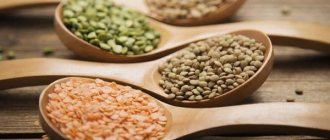Puree soup is a fashionable and relatively recent invention of the culinary art, in the preparation of which chefs and ordinary housewives from different parts of the world never tire of competing. Puree soup is a thick first course, which is prepared from pureed vegetables, cereals, meat or fish; it is often seasoned with milk, butter, and cream. This dish is very well absorbed by the body; it is eaten by both adults, children, and people who watch their diet. So what is the benefit of puree soup, and has it deserved such popularity? And can this delicious dish be harmful?
What is puree soup
Despite the fame of an exquisite, and even sophisticated first course, puree soup is not difficult to prepare. Even an ordinary housewife can create such a dish. And some are even able to prepare puree soup by accident, while preparing a regular soup, without monitoring the readiness of the ingredients, thereby allowing them to boil too much. From which the contents of the saucepan can be proudly called puree soup and served as a delicious treat. And there really is some truth in this joke, because the dish is prepared from the same ingredients as ordinary soup, and extraordinary culinary skills are not required to create it.
The puree soup has the consistency of thick cream and is prepared with a white sauce. White sauce is also not something unimaginable or difficult to prepare. This is the name for a decoction of white meat or fish, vegetables or mushrooms, as well as pearl barley or rice. By the way, puree soup made with milk is called “cream soup”. Mostly poultry meat is used to prepare the broth, but sometimes cream soup made from beef or fish is found. The dish is widely known in vegetarian cuisine; in this case, the white sauce for it is prepared from mushrooms.
Products that are added to the main mass must also be prepared in a special way. They are ground using a sieve or pureed with a blender. Before this, the vegetables need to be brought to a boil or simmered, and when they have softened, grind evenly. So that there are not even small pieces. By the way, the best way is considered to be grinding using a sieve. To grind meat, use first a meat grinder and then a sieve.
Puree soup benefits and harms
Puree soup is a fashionable and relatively recent invention of the culinary art, in the preparation of which chefs and ordinary housewives from different parts of the world never tire of competing.
Puree soup is a thick first course, which is prepared from pureed vegetables, cereals, meat or fish; it is often seasoned with milk, butter, and cream. This dish is very well absorbed by the body; it is eaten by both adults, children, and people who watch their diet.
So what is the benefit of puree soup, and has it deserved such popularity? And can this delicious dish be harmful?
What is puree soup
Despite the fame of an exquisite, and even sophisticated first course, puree soup is not difficult to prepare. Even an ordinary housewife can create such a dish.
And some are even able to prepare puree soup by accident, while preparing a regular soup, without monitoring the readiness of the ingredients, thereby allowing them to boil too much. From which the contents of the saucepan can be proudly called puree soup and served as a delicious treat.
And there really is some truth in this joke, because the dish is prepared from the same ingredients as ordinary soup, and extraordinary culinary skills are not required to create it.
The puree soup has the consistency of thick cream and is prepared with a white sauce. White sauce is also not something unimaginable or difficult to prepare. This is the name for a decoction of white meat or fish, vegetables or mushrooms, as well as pearl barley or rice.
By the way, puree soup made with milk is called “cream soup”. Mostly poultry meat is used to prepare the broth, but sometimes cream soup made from beef or fish is found.
The dish is widely known in vegetarian cuisine; in this case, the white sauce for it is prepared from mushrooms.
Products that are added to the main mass must also be prepared in a special way. They are ground using a sieve or pureed with a blender.
Before this, the vegetables need to be brought to a boil or simmered, and when they have softened, grind evenly. So that there are not even small pieces. By the way, the best way is considered to be grinding using a sieve.
To grind meat, use first a meat grinder and then a sieve.
The benefits of puree soups for the body
The first thing that needs to be mentioned is, although externally transformed, it is still an ordinary soup. Therefore, the benefits and harms of puree soup are approximately the same as their older, liquid “colleague”. The product consists of half water, thanks to which we enrich the diet with liquid. Moreover, this composition significantly facilitates the digestion process.
Like any other soup, a puree dish contains the protein foods, vegetables, and complex carbohydrates we need. Therefore, puree soup can easily boast of a rich vitamin, micro- and macronutrient composition. By the way, contrary to popular belief, most vitamins are not destroyed by high temperatures.
During the cooking process, only part of the beneficial substance may evaporate, but they still retain approximately up to 75% of the original volume. The main thing is not to overcook the vegetables, and then the puree soup will enrich the menu with the most important components for the human body.
The only exception is vitamin C, which is almost completely eliminated when exposed to high temperatures.
Due to its unique consistency, puree soup has a close to ideal combination of proteins, fats and carbohydrates. The components are easily digestible, and even such high-calorie soups are digested very quickly, saturating the body with useful substances. The energy obtained with this dish is also burned easily and quickly, medium activity is enough.
Since the dish contains little fat and the ingredients are highly ground, it is easily processed by our gastrointestinal tract. Vitamins and microelements are quickly absorbed, and waste and toxins are quickly eliminated. Therefore, the benefits of puree soup are obvious for people weakened by diseases, as well as children.
Vegetables and some cereals contain a lot of fiber, and this is the benefit of puree soup for the stomach and the whole body as a whole. Coarse dietary fiber cleanses our intestines, removes toxins from the body, and speeds up metabolism.
They also create the effect of a full stomach: we eat a small bowl of puree soup, and dietary fiber swells in the stomach, and it seems to us that we are full. It is clear that much less other food is eaten this way.
An indispensable property for those who watch their weight.
Two bowls of puree soup a day - and the daily requirement for vegetables is met. Puree soup is especially useful for those who do not like to eat raw or simply coarsely chopped vegetables.
Puree soup for children also has special benefits and harms. The dish is often used as a first complementary food, of course, due to its soft consistency that does not need to be chewed. Plus, it’s easy for a child’s digestive system to digest such food. For the same reason, it is appropriate to include puree soup in the diet of older people.
Children often refuse soups; they don’t like boiled pieces of vegetables floating in their plates. At the same time, you should definitely eat soup from time to time, and an excellent way to feed your child a healthy first course is to prepare puree soup.
The benefits of puree soup for the digestive tract
Soups in general are good for our digestive system, and puree soups especially. The contents of the plate, entering the stomach, gently envelop the gastric mucosa. Thus, it prevents hydrochloric acid from coming into contact with the walls of the stomach. Puree soups are especially useful for people with diseases of the digestive system.
However, you need to know what you can use to prepare a dish, and which product is better to put aside. For example, beetroot-based puree soups should not be eaten by people with gastritis and other manifestations of inflammation of the stomach walls. But pumpkin puree soup would be an excellent solution. Its beneficial properties, by the way, extend not only to “gastratics”.
This dish will also not hurt healthy people.
Healthy puree soups
Of course, the beneficial and harmful properties of puree soup directly depend on the main components. For example, what are the benefits of pureed pumpkin soup? Eating the dish will have a beneficial effect on the cardiovascular system, activates metabolism, and relieves swelling.
Pumpkin promotes fat burning, which will not escape those who want to lose a few extra pounds. Moreover, the dish will help increase mental activity and improve your mood. Do not forget that pumpkin appears on our tables when the amount of vegetables and fruits gradually decreases.
The more valuable is its vitamin, micro- and macronutrient composition.
Broccoli puree soup also brings considerable benefits to the body, because the vegetable has a very rich composition of nutrients. It is especially rich in vitamin K.
Champignon puree soup benefits us due to its high protein content, which is a building material for human muscles. This dish is especially useful for vegetarians, like any other pureed mushroom soup; it will be an excellent source of protein.
No less useful are pureed soups made from other mushrooms and vegetables, lentils, and peas. The benefits of these dishes are worthy of deeper consideration. Moreover, there are countless recipes for preparing the dish.
Harm of puree soup
Yes, the dish also has harmful properties. It has a pleasant consistency, which, as we have already said, our stomach really likes, because it does not need to strain to digest it. However, overuse of pureed soups can lead to “lazy stomach syndrome.”
The dish can also negatively affect the condition of your teeth. To be strong and hold the teeth, the gums need daily massage, which they receive when we chew hard food. If the diet consists mainly of soft food that does not need to be chewed, you may not even dream of a beautiful smile; teeth may be destroyed.
Puree soup can be harmful if you use a lot of fatty ingredients. It will be difficult for the gastrointestinal tract to cope with such food; serious damage can be caused to the body. A beautiful figure will also remain more of a dream. Do not overuse meat puree soups. Against this background, the benefits of vegetable puree soups are much more noticeable.
Soup - benefits and harms for the stomach, beneficial and harmful properties of pea soup, benefits of pureed soups for children
Soup is a traditional dish for all peoples of the world. Depending on the ingredients, it can be high-calorie or dietary, light or filling. It can be a lean broth with a small amount of vegetables, thick and rich borscht, or an exquisite puree soup that melts in your mouth.
Since childhood, we have been taught that first courses are healthy. But today they have many opponents. So, what weighs on the balance – benefit or harm? Let's figure it out.
Broth prepared with high-quality meat does not cause allergies and contains most of the necessary nutrients.
The main advantages of first courses:
- Quickly absorbed
- Stimulates digestion
- Warm
- Increase appetite
- Normalize blood pressure
Puree soups with vegetable, weak meat or fish broth are indicated for diabetes, as well as stomach diseases. You can prepare soups for children of kindergarten and primary school age using chicken or veal broth.
Chicken broth contains substances that suppress inflammatory processes. It is useful for sore throat, flu, atherosclerosis. It is loved not only for its excellent taste, but also for the feeling of warmth and comfort that we associate with the hearth and grandmother's care.
- Stimulates the functioning of the stomach, pancreas and gallbladder and is useful for chronic pancreatitis, diabetes and low acidity
- Has a stimulating effect on the nervous system, invigorates
- Normalizes digestion
- Slows down infectious processes
- Liquefies mucus in the bronchi
The stimulating properties of chicken broth turn into harm in a number of ailments: high acidity and ulcers, during exacerbation of pancreatitis . In particular, it is contraindicated for gout and urolithiasis.
In a puree soup, the ingredients are finely ground and diluted with broth. Thanks to its creamy, delicate consistency, it has a beneficial effect on the functioning of the stomach.
Thick puree soups have excellent taste. Besides:
- They are easy on the stomach
- Great for unloading the body
- Digest quickly
- Look delicious
- Helps improve peristalsis
- Regulate water-salt balance
- Well absorbed and gives strength
Such soups are useful for children and the elderly.
Pea soup is an international dish. What kind of products are not put in it - celery, onions, smoked sausages or ribs, pork, lard, etc. Depending on the ingredients, its calorie content can be quite high. But the healing properties and benefits of pea soup more than offset the harm of fats. Judge for yourself:
- Normalizes metabolism
- Has a beneficial effect on the heart
- Helps fight depression
- Strengthens immunity
- Regulates blood pressure in hypertension
- Normalizes sugar levels in diabetes
It contains a lot of protein and carbohydrates, potassium, magnesium, phosphorus.
Vegetarian soup is effective for losing weight and maintaining ideal weight. After all, it has fewer calories than fried or stewed foods, but is highly nutritious. It is useful for diabetes, gastrointestinal diseases (especially puree soups), which require limiting the consumption of raw vegetables and fruits.
When cooked, almost all the beneficial substances from vegetables pass into the broth. Low-calorie vegetable soup is ideal for losing weight and cleansing the body. Nutritionists recommend organizing fasting days from time to time using celery or onion soup.
Despite the fact that the main ingredient of onion soup is the “tear” vegetable, its taste is incredibly refined. No wonder this dish is so popular in France.
The healing properties of onion broth lie in its antimicrobial and vitamin properties - it:
- Rich in calcium, iron, vitamins.
- Normalizes hemoglobin
- Strengthens bones and tooth enamel
This soup is ideal for losing weight and activating metabolism. Recent studies have proven the beneficial properties of onion soup for the prevention of cancer, diabetes, pancreatitis, gastrointestinal ulcers, and inflammation of internal organs.
Source: https://zdv.su/sup-pyure-polza-i-vred/
The benefits of puree soups for the body
The first thing that needs to be mentioned is, although externally transformed, it is still an ordinary soup. Therefore, the benefits and harms of puree soup are approximately the same as their older, liquid “colleague”. The product consists of half water, thanks to which we enrich the diet with liquid. Moreover, this composition significantly facilitates the digestion process. Like any other soup, a puree dish contains the protein foods, vegetables, and complex carbohydrates we need. Therefore, puree soup can easily boast of a rich vitamin, micro- and macronutrient composition. By the way, contrary to popular belief, most vitamins are not destroyed by high temperatures. During the cooking process, only part of the beneficial substance may evaporate, but they still retain approximately up to 75% of the original volume. The main thing is not to overcook the vegetables, and then the puree soup will enrich the menu with the most important components for the human body. The only exception is vitamin C, which is almost completely eliminated when exposed to high temperatures.
Due to its unique consistency, puree soup has a close to ideal combination of proteins, fats and carbohydrates. The components are easily digestible, and even such high-calorie soups are digested very quickly, saturating the body with useful substances. The energy obtained with this dish is also burned easily and quickly, medium activity is enough.
Vegetable soup
Vegetable soup
For 2 servings you will need:
– carrots – 1 – onion – 1 – cabbage – a handful – fresh cucumber – 1 – tomatoes – 3 – bell pepper – 1/2
Preparation:
1. Peel and chop all vegetables in advance. 2. Then we begin to lay cut vegetables in layers: 1 layer – 1 carrot; 2nd layer – 1 onion; 3rd layer – a handful of cabbage; 4th layer – 1 fresh cucumber (do not neglect the cucumber, it gives a unique taste to the soup); 5th layer – 3-4 tomatoes; 6th layer – 1/2 sweet pepper (well colored). 3. Close the pan with a lid and simmer over low heat for 25-30 minutes, in its own juice (if necessary, you can add a little water), shake periodically. Then pour boiling water, add salt, bring to a boil and turn off.
The soup is ready. Serve with dill, parsley and sour cream 10%; you can add grated garlic and pepper to taste.
The benefits of puree soup for the digestive tract
Soups in general are good for our digestive system, and puree soups especially. The contents of the plate, entering the stomach, gently envelop the gastric mucosa. Thus, it prevents hydrochloric acid from coming into contact with the walls of the stomach. Puree soups are especially useful for people with diseases of the digestive system. However, you need to know what you can use to prepare a dish, and which product is better to put aside. For example, beetroot-based puree soups should not be eaten by people with gastritis and other manifestations of inflammation of the stomach walls. But pumpkin puree soup would be an excellent solution. Its beneficial properties, by the way, extend not only to “gastratics”. This dish will also not hurt healthy people.
Cheese soup with chicken
chicken soup
Ingredients:
– 400 grams of chicken fillet – 2 potatoes – 1 large carrot – 180 grams of processed cheese – 2 liters of broth or water – greens – bay leaf, allspice peas – salt, pepper
Let's prepare it like this:
1. Cut the chicken fillet into medium-sized cubes. Peel potatoes and carrots. Cut the potatoes into cubes, carrots into half rings. Lightly fry the fillet in a frying pan with a little olive oil. Bring the broth to a boil, add bay leaf and allspice and add fillet cubes. 2. Reduce heat slightly and cook for 7-10 minutes. Then add vegetables and cook for another 10-15 minutes. Add melted cheese to the soup and stir well until the cheese is completely dissolved. Add salt and pepper to taste. Finely chop the greens and add to the soup. Stir and remove from heat.
Healthy puree soups
Of course, the beneficial and harmful properties of puree soup directly depend on the main components. For example, what are the benefits of pureed pumpkin soup? Eating the dish will have a beneficial effect on the cardiovascular system, activates metabolism, and relieves swelling. Pumpkin promotes fat burning, which will not escape those who want to lose a few extra pounds. Moreover, the dish will help increase mental activity and improve your mood. Do not forget that pumpkin appears on our tables when the amount of vegetables and fruits gradually decreases. The more valuable is its vitamin, micro- and macronutrient composition.
Broccoli puree soup also brings considerable benefits to the body, because the vegetable has a very rich composition of nutrients. It is especially rich in vitamin K.
Champignon puree soup benefits us due to its high protein content, which is a building material for human muscles. This dish is especially useful for vegetarians, like any other pureed mushroom soup; it will be an excellent source of protein.
No less useful are pureed soups made from other mushrooms and vegetables, lentils, and peas. The benefits of these dishes are worthy of deeper consideration. Moreover, there are countless recipes for preparing the dish.
Are the grandmothers right?
“In our family, it’s customary to have soup every day for lunch; I cook it; my husband and sons love it very much, and they simply can’t live without it. It is nutritious and warms well in winter. I think this is useful,” says Saratov resident Inna Grigorieva.
“Soups are useful,” says gastroenterologist Lyudmila Verzeeva, “firstly, they are filling, but at the same time light, and are absorbed by the body quite quickly. It is very important to eat them for people who are underweight or have poor appetite, as well as those who are recovering from an illness. Chicken broth, for example, contains substances that relieve the symptoms of colds. There are fewer calories in the “first” dish than in fried or even stewed ones, and in nutritional value it is not inferior to them, this is important for those who want to lose weight. In addition, soups help restore fluid balance, and, as a result, normalize blood pressure.
Poisonous soup
At the same time, according to the doctor, there is another side to the coin. Firstly, your “first” can worsen digestion, because liquid during meals dilutes gastric juice. Heat treatment sharply reduces the amount of nutrients that die already at a temperature of 57 degrees. Meat broth is absorbed very quickly by the intestines, and the liver simply does not have time to process the meat extracts from the soup. As a result, they, in the form of poisons, wander throughout the body and cause harm to many organs. Another nuisance is that during cooking, harmful chemicals from the meat are sent floating openly into the broth. Today, growth accelerators and various hormones are used as additives in animal feeding almost everywhere, so some housewives prepare soups with a second broth: the meat is cut into small pieces, placed in cold water, brought to a boil and boiled for about five minutes, after which the “poisonous broth” drain, pour in cold water and finish cooking the meat in it and prepare the “first thing”.
Despite the abundance of disadvantages, experts agree that the main thing is moderation, which, as we know, does not bring any harm. Therefore, in order to diversify your diet, you can and should eat soups. We asked the chef of one of the Saratov restaurants, Alexey Dolgoprudny, to tell us how to prepare the most popular, delicate and rather simple puree soup.
A selection of healthy soups
Meatball soup 40 kcal. per 100 g
Ingredients
water 2 l minced meat 200 g carrots 100 g potatoes 300 g rice 100 g green onions 40 g salt, pepper bay leaf
Preparation: Place grated carrots and potatoes into boiling water. Form meatballs from the minced meat. When the potatoes are half cooked, add the meatballs, bay leaf, salt and pepper to taste. A couple of minutes before the soup is ready, add chopped herbs and onions. You can put any cereal in the soup; then add it along with the potatoes. You can also fry carrots and onions, then your soup will have a more expressive taste and higher calorie content.
2. Cheese soup Calorie content per 100 g - 30 k
Amount of ingredients per 1.5 liters of water
1.5 pieces of processed cheese (take the proven one, because the whole soup depends on its taste) 1 small carrot 1 small onion 4 medium potatoes
1. Peel the potatoes, cut into small pieces and let them cook. 2. Grate the carrots, finely chop the onion, and simmer. oil (1 teaspoon). 3. Add carrots and onions to the potatoes, cut the cheese into cubes and also throw into the pan. 4. Stir the soup until the cheeses are completely melted in the boiling water. Add salt to taste. Cook for 30 minutes. 5. Before serving, sprinkle with finely chopped herbs.
You can use mushrooms, shrimp, bell peppers, etc. in the soup.
3. Cheese soup with chicken (40 kcal per 100 g)
400 grams of chicken fillet 2 potatoes 1 large carrot 180 grams of processed cheese 2 liters of broth or water greens bay leaf, allspice peas salt, pepper
Cut the chicken fillet into medium-sized cubes. Peel potatoes and carrots. Cut the potatoes into cubes, carrots into half rings. Lightly fry the fillet in a frying pan with a little olive oil. Bring the broth to a boil, add bay leaf and allspice and add fillet cubes. Reduce heat slightly and cook for 7-10 minutes. Then add vegetables and cook for another 10-15 minutes. Add melted cheese to the soup and stir well until the cheese is completely dissolved. Add salt and pepper to taste. Finely chop the greens and add to the soup. Stir and remove from heat.
4. Vegetable soup Proteins * Fats * Carbohydrates * Kilocalories per 100 g 1.01 * 0.13 * 5.12 * 24.31
For 2 servings you will need:
carrots - 1 onion - 1 cabbage - handful fresh cucumber - 1 tomatoes - 3 bell peppers - 1/2
Preparation:
Peel and chop all vegetables in advance. Then we begin to lay the cut vegetables in layers: 1 layer - 1 carrot; 2nd layer - 1 onion; 3rd layer - a handful of cabbage; 4th layer - 1 fresh cucumber (do not neglect the cucumber, it gives a unique taste to the soup); 5th layer – 3-4 tomatoes; 6th layer – 1/2 sweet pepper (well colored). Cover the pan with a lid and simmer over low heat for 25-30 minutes, in its own juice (if necessary, you can add a little water), shake periodically. Then pour boiling water, add salt, bring to a boil and turn off.
The soup is ready. Serve with dill, parsley and sour cream 10%; you can add grated garlic and pepper to taste.
5. Milk soup with vegetables
milk - 1 l water - 400 g potatoes - 400 g cauliflower - 380 g carrots - 100 g green peas - 300 g butter - 20 g salt
1. Carrots are cut into small cubes and sautéed in half the amount of oil until they color. 2. Cabbage is separated into individual inflorescences. 3. Peeled potatoes are cut into small cubes. 4. Boil the milk and skim off the foam. 5. Bring the water to a boil, add salt, add potatoes and cabbage, and after boiling, add sautéed carrots. Cook at low boil until half cooked, then pour in hot milk and bring to readiness. 6. At the end, add green peas, let it boil and leave for 15 minutes. 7. Place a piece of butter on top of the bowl of soup.
Per 100 g – 52.67 kcal.
Shall we turn on some music to set the mood?
Now playing:
Open Kluber FM website | iOS app | Android app
What are the benefits of pureed soups?
Soups are first courses in which the liquid content is more than half. They can be cooked in vegetable, meat or fish broth with the addition of vegetables, pasta, and cereals. This makes the soup a light, but quite satisfying dish that is quickly absorbed, stimulates the digestion process, and increases appetite.
When prepared by boiling, soups contain less fat than stewed or fried dishes, and the food in them retains more nutrients. Many of these substances go into the broth, making it a completely complete independent dish, but at the same time low in calories.
Vegetables, which are a mandatory ingredient in almost all soups, are necessary for the body both as a source of fiber and as sources of minerals and vitamins. They have a positive effect on metabolism and metabolic processes, restoring fluid balance in the body and normalizing blood pressure.
Puree soups are especially useful for people in the rehabilitation period and recovering from a serious illness. Eating soups allows you to get all the necessary nutrients without overloading the digestive organs and without wasting energy on it.
But it turns out that the benefits of soups also depend on the method of preparation. The healthiest ones are pureed soups, the ingredients of which are finely ground and diluted with the broth in which they were boiled. This method of preparation increases the digestibility of the soup, and their delicate consistency greatly facilitates the work of the entire gastrointestinal tract. Puree soups made from broccoli, pumpkin and tomato are a must for those who adhere to strict diets, so as not to cause irreparable harm to health.
An immersion blender is perfect for making pureed soups, and if you don’t have one, you can puree the soup using a fine metal sieve.
Benefit or harm first: How to find
Day after day, categorical mothers tell their children that they must “eat thin food.” And capricious husbands tell their wives: “Soup is not food at all!” Who to believe? Of course, first courses are beneficial... but, unfortunately, not for everyone and not always. It's time to understand this issue and talk frankly about the benefits of different types of soup!
“From a bare bones - no profit!”
Do you know why experienced housewives drain the water while cooking meat? The fact is that primary meat broth absorbs a large amount of harmful organic compounds , so-called extractives.
They stimulate the appetite and give taste to meat, fish, mushrooms, vegetables... And when they enter the stomach, they provoke various disturbances in the functioning of the body , for example, pain in the joints.
So perspiration and pleasant drowsiness after lunch are not a reason to rejoice at all!
Tip: One of the available products that help slow down the absorption of extractives is porous bread. Therefore, hearty meals should be eaten with a piece of bread . Just don't get too carried away: avoid overeating!
Are all soups equally healthy?
It's difficult for us to predict what foods will end up in your soup today. After all, there are many recipes with different amounts of ingredients - sometimes up to two or three dozen! So when we say “soup,” we can mean dishes that are completely different from each other.
For simplicity, let's divide them into groups:
- Meat broth soup (made from red meat) is considered useful for lung diseases, low body weight and poor appetite. But at the same time, extractive substances are a source of increased stress for the cardiovascular system, liver, gallbladder and pancreas. bone-in meat during cooking , you risk getting a “gift” in the form of heavy metal salts, mercury and arsenic compounds.
- Chicken broth is a popular remedy for maintaining strength in a body weakened by illness. The main advice is to use only high-quality products! The hormones and antibiotics that chickens are fed with these days are of no use to you... We have dedicated a separate article to recommendations for choosing poultry meat.
- Fish soup is the healthiest among broth-based soups. It perfectly restores strength, and therefore it is recommended to everyone, of course, if there is no allergy to fish. You should also be careful with metabolic disorders, gout and urolithiasis.
- Vegetable soup (vegetarian) – especially suitable for those who need digestion stimulation. The only bad thing is that vegetables lose the lion's share of vitamins during heat treatment. If you have joint problems, it is better to avoid sorrel and spinach soup, and if you have inflammation of the gastrointestinal tract, avoid mushroom soup.
- Seafood soup (shrimp, mussels, squid, scallops...) is a rich source of easily digestible protein and iodine. It strengthens the immune system and does not pose a risk of excess calories.
- Cold soups are often prepared like a salad, topped with some kind of drink, such as kefir, kvass or brine. For health – a very suitable option! Unless it doesn’t warm you up in winter...
Is there any harm from pureed soups?
Cream soups cooked in vegetable broth are a low-calorie vegetarian dish that will also be useful for meat lovers as a fasting diet.
Another complaint about pureed soups is their calorie content. When adding flour or cream and croutons for taste as a thickener, the calorie content of such a soup increases significantly. But in this case, one can argue that flour is not a necessary ingredient at all and the soup will be quite good without it. A tablespoon of cream or crackers will not increase the calorie content much, but the soup will be tastier and easier to digest. As you can see, there are no serious arguments against eating pureed soups.










